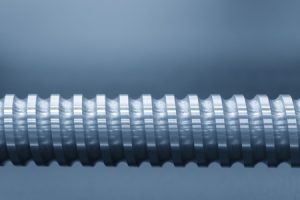
Are ACME and trapezoidal threads the same? While they have similarities, they also have differences.
Both ACME and trapezoidal threads have the same purpose and time of development and they’re both useful for many of the same applications. That said, they have some differences that would determine when you’d want to use them.
ACME Threads Are Common in the United States
ACME threads are common in the USA and were developed with regard to Imperial units. Trapezoidal threads, on the other hand, were developed with regard to metric units, so they’re commonly used in European countries where the metric system is the standard.
The History of ACME Threads
ACME threads were originally developed in the late 1800s after square threads, which were the standard at the time, were found to be weak and not up-to-par for demanding applications. ACME threads are unique because they feature a 29-degree thread angle, and this gives them strength and durability. Therefore, they work well in heavy load applications. ACME thread diameters and pitches were established with regard to Imperial units.
A Look Back at Trapezoidal Threads
Trapezoidal threads were developed around the same time as ACME threads, but instead of 29-degree thread angles, they feature 30-degree thread angles. This difference was/is partially due to the fact that Europeans use the metric system of measurement.
Although most sizes are not interchangeable on their own, with manufacturing tolerances and if threads-per-inch are the same, then you may be able to use them interchangeably. The best question, though, is to ask this: “Where were the parts manufactured and/or sold?” If the parts are intended for the U.S. (and other countries using the Imperial system), then ACME products work well. If the parts are European, trapezoidal threads might be the obvious choice.
Do you need ACME threaded products? If so, call the Dependable ACME company of Westbury, NY, to discuss your specific needs. Please call 800-893-3792 for more info.

